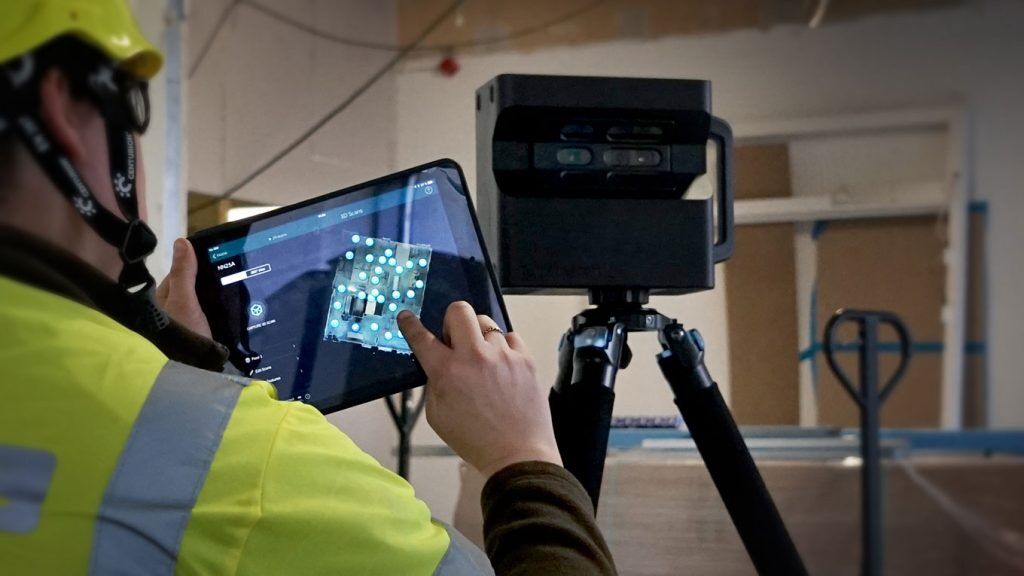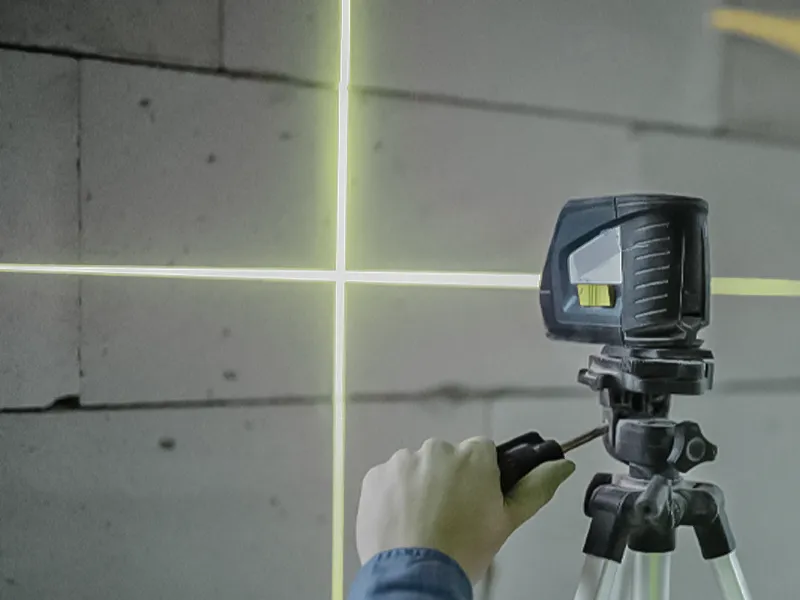How Advanced 3D Scanning Is Transforming Architectural Design
Exploring the Applications of 3D Laser Scanning in Archaeology and Cultural Heritage Preservation
The integration of 3D laser scanning technology in archaeology and cultural heritage preservation marks a considerable improvement in just how archaeological sites and artefacts are documented and evaluated. This non-invasive method supplies specific spatial information, disclosing complex information that were formerly tough to record. As the applications of this modern technology proceed to progress, numerous effects for documents, education, and preservation emerge, welcoming additional exploration into its transformative effect on the field.
Understanding 3D Laser Scanning Technology
3D laser scanning modern technology has transformed the area of archaeology by supplying thorough and exact spatial data. This innovative innovation employs laser beam of lights to capture numerous data factors from an object or website, producing a highly precise three-dimensional representation (3D Scanning). The resulting factor clouds can reveal complex details of historical sites, frameworks, and artifacts that could be unnoticeable to the nude eye
Utilizing this technology, archaeologists can record the exact measurements, shapes, and placements of objects with extraordinary accuracy. This approach minimizes the danger of human mistake and gets rid of the demand for substantial hand-operated measurements. The data gathered can be assessed and shared easily, helping with cooperation amongst researchers. By integrating 3D laser scanning with GIS and various other electronic devices, archaeologists improve their capacity to visualize and interpret historical contexts, causing much deeper insights into ancient societies and settings.
Enhancing Archaeological Documentation
3D laser scanning substantially enhances archaeological documentation with its capacity to develop exact website maps. This modern technology facilitates detailed artifact analysis, offering insights that conventional techniques may neglect. In enhancement, it ensures the conservation of contextual information, which is crucial for understanding the partnerships within historical websites.
Exact Website Mapping
While standard mapping techniques typically deal with catching the complex details of historical sites, advanced laser scanning modern technology supplies a revolutionary approach to precise site mapping. This approach makes it possible for excavators to produce extremely detailed and precise three-dimensional depictions of websites, showcasing topographical variations and structural attributes with exceptional fidelity. The ability to capture numerous information points in an issue of mins permits complete paperwork, which can be quickly updated and shared among scientists. In addition, laser scanning promotes the dimension of complex geometries that would certainly be tough to examine using standard devices. Therefore, this modern technology boosts the precision of website maps, contributing considerably to the preservation and understanding of social heritage sources.
Detailed Artefact Analysis
Laser scanning technology greatly boosts the evaluation of archaeological artifacts, supplying scientists with unmatched detail and precision. This approach captures detailed surface area structures, measurements, and includes that traditional documents strategies may overlook. By producing high-resolution 3D models, scholars can closely check out artefacts without the danger of damage integral in physical handling. This precision permits much better relative studies, allowing experts to identify production techniques, stylistic variants, and prospective social importance. In addition, the ability to control and picture information in three dimensions helps with a much deeper understanding of artefact capability and usage. Generally, laser scanning cultivates an extra complete method to archaeological documentation, making sure that crucial details concerning artefacts is preserved for future study and education.
Preservation of Contextual Data
Preserving contextual information is essential for enhancing archaeological documentation, as it assures that searchings for are recognized within their initial environmental and cultural frameworks. 3D laser scanning technology greatly contributes to this conservation initiative by catching in-depth spatial connections among artifacts, frameworks, and their atmospheres. By producing accurate 3D models, archaeologists can record the precise locations and orientations of things sitting, assisting in a complete understanding of their context. This innovation enables researchers to take another look at and examine sites long after excavation, maintaining the honesty of contextual info. In addition, electronic documents produced through scanning can be shared around the world, promoting collaborative study and public interaction. Ultimately, maintaining contextual data via 3D laser scanning enhances archaeological stories and promotes a more extensive gratitude of social heritage.
Conservation of Cultural Heritage Sites
As advancements in modern technology remain to evolve, the conservation of cultural heritage websites has actually ended up being increasingly reliant on cutting-edge techniques such as 3D laser scanning. This modern technology permits the detailed paperwork of frameworks, landscapes, and artifacts, capturing their exact measurements and spatial relationships in a non-invasive way. By creating high-resolution 3D designs, scientists can check and evaluate deterioration patterns, enabling positive preservation approaches.
In addition, 3D laser scanning helps with the sharing of in-depth website data with the global neighborhood, advertising cooperation among excavators, preservationists, and historians. These models act as vital sources for education and learning and public involvement, elevating recognition of social heritage concerns. The electronic documents developed can guard versus loss due to ecological aspects, criminal damage, or disregard. Generally, 3D laser scanning stands for a transformative technique to the preservation of cultural heritage, guaranteeing that these sites can be studied and valued by future generations.

Remediation and Reconstruction Efforts
The thorough paperwork achieved via 3D laser scanning plays a considerable duty in remediation and repair efforts within archaeology. This modern technology provides exact dimensions and high-resolution imagery, enabling exact digital versions of structures and artifacts. These versions function as crucial referrals during repair procedures, making it possible for archaeologists to make and imagine the original design informed decisions about materials and techniques needed for repair service.
3D laser scanning facilitates the repair of harmed or lost components by creating thorough replicas. This process aids in making certain that restorations maintain historic stability while also permitting for ingenious techniques to restore websites. The capacity to examine wear patterns and structural weak points through scanned information boosts understanding of a website's historic context and its use gradually. As a result, 3D laser scanning not just maintains the physical facets of cultural heritage yet additionally enhances the narrative of background, leading future remediation undertakings.
Educational and Research Opportunities
The combination of 3D laser scanning in archaeology opens significant academic and research chances. Academic collaborations can improve the understanding of old sites, while specialized training workshops furnish specialists with important skills for utilizing this modern technology. With each other, these efforts promote a richer involvement with historical techniques and methodologies.
Academic Collaborations in Archaeology
Joint initiatives in archaeology have ended up being significantly vital for progressing both instructional and research study chances. By promoting collaborations among universities, research organizations, and social heritage organizations, these collaborations promote the exchange of understanding and resources, enhancing the quality of historical researches. Joint jobs usually leverage varied experience, enabling thorough evaluations and ingenious methodologies, especially in the application of technologies like 3D laser scanning. Such partnerships additionally promote interdisciplinary techniques, involving fields such as history, location, and preservation scientific read the full info here research. Furthermore, scholastic partnerships usually result in the development of new educational programs and training programs, preparing the future generation of excavators to efficiently make use of advanced modern technologies in their job. Inevitably, these partnerships add to the preservation and understanding of social heritage.
Training Workshops for Experts
Training workshops for experts in archaeology are increasingly vital for boosting skills in the application of innovative modern technologies such as 3D laser scanning. These workshops provide individuals with hands-on experience in utilizing innovative tools and software, cultivating a deeper understanding of data capture and analysis processes. Experts can discover to develop accurate digital models of historical sites, which considerably aid in documents and conservation initiatives. Furthermore, these training sessions commonly consist of discussions on finest techniques and study, promoting understanding exchange among individuals. By buying continuous education moved here and learning, experts can stay updated on advancing modern technologies, ultimately boosting the effectiveness of their research and cultural heritage preservation efforts. This commitment to skill enhancement is vital for advancing the field of archaeology.
Future Trends in 3D Laser Scanning for Archaeology
As developments in modern technology remain to reshape different fields, the future of 3D laser scanning in archaeology assures to boost both the precision and performance of site paperwork and analysis. Arising fads indicate a growing integration of expert system and machine learning, promoting automated information handling and analysis. This evolution will enable excavators to examine complicated datasets faster, causing faster insights into historic contexts.
The assimilation of drone technology with 3D laser scanning is most likely to expand, making it possible for thorough aerial studies of archaeological websites that are difficult to accessibility. The boosting price of scanning equipment will democratize access, equipping smaller sized establishments and independent researchers to utilize these devices successfully. Furthermore, improvements in digital reality and augmented fact will enable immersive experiences for public interaction and education, making archaeological searchings for much more interactive and accessible. These fads collectively signal a transformative future for archaeology, improving conservation efforts and increasing the technique's outreach.
Often Asked Concerns
Just How Much Does 3D Laser Scanning Equipment Cost?

What Are the Limitations of 3D Laser Scanning?
The limitations of 3D laser scanning include high costs, potential information handling obstacles, sensitivity to environmental conditions, and difficulty catching detailed details in complex surface areas, which can influence the accuracy and efficiency of checked depictions. (3D Scanning)

Can 3D Laser Scanning Be Made Use Of Undersea?
Yes, 3D laser scanning can be used undersea, but it calls for specialized equipment and methods to conquer difficulties such as water distortion and restricted visibility. Effective applications have been shown in marine archaeology and undersea studies.
The length of time Does a Scanning Task Generally Take?
A scanning task commonly takes anywhere from a few days to a number of weeks, relying on the complexity and size of the area being checked, in addition to the prep work and post-processing demands entailed in the task.
Are There Specific Software Requirements for Handling 3D Checks?
Yes, particular software requirements for processing 3D scans include programs with the ability of dealing with huge point clouds, such as Autodesk Wrap-up, Cyclone, or MeshLab. These devices assist in analysis, visualization, and assimilation right into different applications efficiently.
The combination of 3D laser scanning technology in archaeology and cultural heritage conservation marks a considerable innovation in exactly how historical websites and artifacts are recorded and assessed. 3D laser scanning innovation has revolutionized the area of archaeology by providing thorough and exact spatial information. As developments in modern technology continue to develop, the conservation of cultural heritage websites has actually come to be increasingly dependent on ingenious methods such as 3D laser scanning. you could try this out As advancements in technology proceed to reshape various fields, the future of 3D laser scanning in archaeology assures to enhance both the precision and effectiveness of site documents and evaluation. The combination of drone technology with 3D laser scanning is likely to expand, making it possible for thorough airborne studies of historical sites that are hard to access.